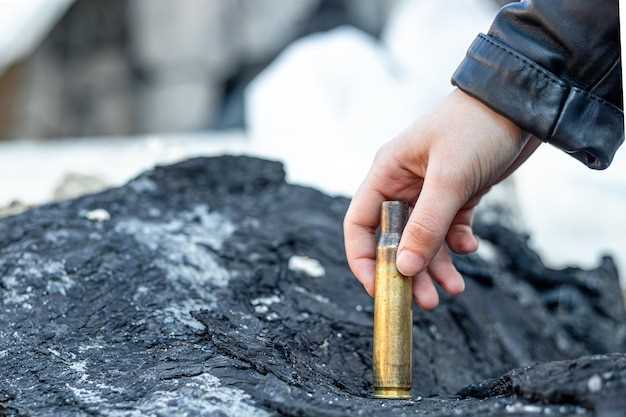
Lubrication tips for optimal firearm performance

Proper lubrication of your firearm is essential for ensuring its peak performance and longevity. Just like any mechanical device, guns rely on smooth movement and reduced friction for optimal functioning. Without adequate lubrication, critical components can wear down quickly, leading to malfunctions or even catastrophic failures.
Understanding the right type of lubrication is crucial for every gun owner. Different firearms require different lubricants, and using the wrong product can compromise both safety and reliability. In this article, we will explore effective lubrication techniques and tips tailored to various types of guns, ensuring that your firearm remains in top condition regardless of its intended use.
From selecting the suitable lubricant to knowing when and how to apply it, mastering the art of gun lubrication can significantly enhance your shooting experience. By implementing these tips, you can maintain your firearm’s functionality and enjoy a smoother and safer operation at the range or in the field.
Choosing the Right Gun Oil for Your Firearm
Selecting the appropriate gun oil is crucial for effective lubrication and maintenance of your firearm. The right oil not only minimizes friction but also helps prevent rust and corrosion, ensuring longevity and reliability. When choosing gun oil, consider the following factors:
First, look for oils specifically formulated for firearms. These products are designed to withstand the unique conditions of gun operation, including high temperatures and varying pressures. They typically contain additives that provide enhanced protection against wear and moisture.
Second, understand the type of gun you own. Different firearms may require different lubrication types. For example, semi-automatics may benefit from oils that offer superior penetration, while bolt-action rifles might need a heavier oil for optimal performance.
Additionally, consider the environmental conditions where you will be using your firearm. If you frequently shoot in humid or wet environments, choose an oil with excellent water-repellent properties. Conversely, for dry conditions, a thin oil may be sufficient to keep your firearm running smoothly.
Another critical aspect is the viscosity of the gun oil. Thicker oils provide more protection but can attract dirt and debris, while thinner oils offer better flow and penetration but may need more frequent application. Balance is key; select a viscosity that complements your shooting style and firearm type.
Lastly, while cost can be a factor, prioritize quality over price. Investing in a high-quality gun oil may save you money in the long run by protecting your firearm and reducing the need for repairs or replacements. Always read product reviews and recommendations from other firearm enthusiasts to ensure you’re making an informed choice.
Application Techniques for Optimal Lubrication

To achieve peak performance in your firearm, proper lubrication is crucial. The key is not just using the right oil, but also mastering effective application techniques.
Firstly, begin by cleaning the firearm thoroughly. Any dirt or residue can impede the effectiveness of the lubrication. Once clean, select a high-quality lubrication oil that is specifically formulated for firearms. These oils are designed to withstand high temperatures and prevent oxidation.
When applying the oil, use a precision applicator or a small brush. This allows for targeted application, minimizing excess that can attract debris. Focus on critical areas such as the slide rails, bolt carrier group, and trigger assembly. A common mistake is over-lubricating; a thin, even layer of oil is often sufficient.
Another effective technique is to apply lubrication while manipulating the action of the firearm. Cycle the slide or bolt repeatedly to ensure the oil is distributed evenly throughout the moving parts. This practice enhances the oil’s ability to penetrate and adhere to surfaces.
After applying the lubrication, wipe away any excess with a clean cloth. Excess oil can create a buildup of grime and dust, which may lead to malfunctions. It’s essential to maintain a balance – enough oil to provide protection without creating a mess.
Regular maintenance is vital. Check and reapply lubrication after each shooting session, or whenever you notice signs of wear or dry spots. Consistent attention to these techniques will ensure that your firearm operates smoothly and reliably, extending its lifespan significantly.
Maintaining Lubrication Frequency Based on Usage

Proper lubrication of firearms is essential for ensuring optimal performance and longevity. The frequency of lubrication should be determined by the level of usage. For firearms that are used regularly, such as handguns for personal defense or rifles for competitive shooting, it is advisable to lubricate after every use. This regular maintenance helps to prevent wear and tear caused by friction and ensures that the oil is consistently functioning effectively.
For firearms that are used less frequently, such as hunting rifles or collectible pieces, a lubrication schedule should be established based on the number of rounds fired or the time interval between uses. A general rule of thumb is to apply oil every 200 rounds or every three months, whichever comes first. This practice helps to combat moisture and environmental elements that can lead to rust or corrosion.
It is also important to consider the conditions in which the firearm is stored. Firearms kept in humid environments may require more frequent lubrication than those stored in dry conditions. Regular inspections can help determine if lubrication is necessary sooner than anticipated, especially after exposure to extreme conditions or after long periods of inactivity.
Utilizing the right type of oil is crucial for effective lubrication. Different firearms may require specific oils or greases to function optimally. Always refer to the manufacturer’s guidelines to select the appropriate lubricant for your model, and ensure that the oil is evenly distributed across all moving parts to maintain peak performance.




